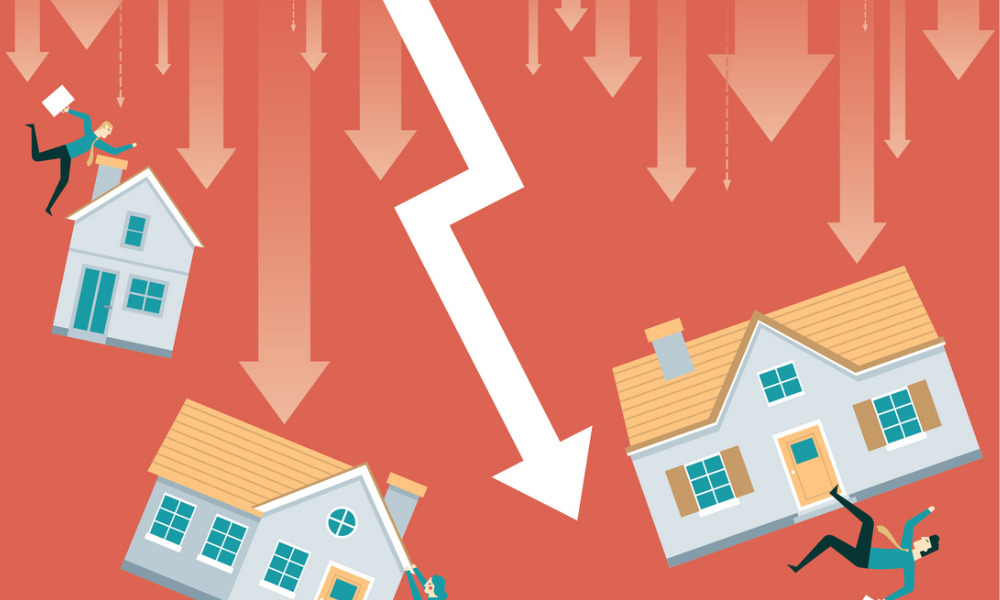Rates have surged throughout the year – and more increases are on the way

It was a soundbite that appeared to pave the way for a prolonged Canadian housing market boom: Bank of Canada governor Tiff Macklem’s announcement in July 2020 that record-low interest rates weren’t going away anytime soon.
With the country still reeling from the economic impact of COVID-19, the central bank revealed that it was keeping its key interest rate at 0.25%, having dramatically slashed borrowing costs at the end of March as the pandemic took hold.
“Our message to Canadians is that interest rates are very low,” Macklem told a press conference, “and they’re going to be there for a long time.”
Canada’s housing market surged as homebuyers rushed to take advantage of that rock-bottom rate environment during the following 18 months – but those days are now a distant memory, with soaring inflation having jolted the central bank into a series of rate hikes throughout 2022.
The Bank’s trendsetting rate is now 3% higher than it was as recently as February, and further increases appear inevitable as it struggles to contain yearly price growth that hit a four-decade high over the summer.
That means scores of borrowers who took on a variable-rate mortgage in recent times are now seeing their payments climb and budgets stretched – with more hikes on the horizon. But could increasingly dizzying mortgage costs for homeowners pose a systemic risk to Canada’s housing market?
Among the strongest bulwarks against that possibility are the B-20 lending guidelines introduced by the country’s banking regulator in 2016, meaning most borrowers are protected against the risk posed by rate hikes, according to a prominent market observer.
Dominique Lapointe, director of macro strategy at Manulife Investment Management, told Canadian Mortgage Professional that those rules – which test whether a prospective borrower could afford a rate of 5.25% or two percentage points above their contract rate, whichever is higher – mean that the risk is “generally contained” for most people at present.
That’s because most Canadians who took on mortgage debt during the pandemic have proven they can absorb the shock of rate increases, Lapointe said, although that also depends on when those rate hikes stop. “If they’re higher for longer than we think, for more people it’s going to be a problem,” he said.
In a study on household debt risks during the pandemic, the Bank of Canada said that homeowners turning to instruments including home equity lines of credit (HELOCs) to mitigate COVID-related income losses was “not ideal” because of the potential for future financial vulnerability.
A minority of Canadians grappling with significant levels of debt could bear the brunt of future rate jumps by the central bank, according to Lapointe.
“Any shock to monthly payments could cause a big problem for those households,” he said. “And it’s been a growing minority. But in terms of systemic risk, our view is still that it’s generally low.”
While home prices in most of the country’s major markets have started to fall in 2022, affordability remains a challenge because of those higher borrowing costs – with RBC recently declaring that it has never been more difficult to buy a home in Canada.
Rate hikes are having more of an impact on the resale market than on construction, Lapointe said, with the latter remaining strong and likely to accelerate until at least the end of 2023’s first quarter.
But is the housing market factoring into the Bank of Canada’s thinking on interest rates? “Not at all,” according to Lapointe.
“If you go back and read what the Bank of Canada said in its statement when it made its last monetary policy decision, they said that the pullback in housing comes from unsustainably high levels in 2021,” he said. “Which is true – we agree with that assessment.”
The central bank would need to see “two or three” positive inflation reports, with each showing more significant declines in annual price growth than between July and August (0.6%), before it begins to consider cutting rates again, Lapointe said.
Core measures need to decline notably for two or three months to make the Bank confident about the downward trend – and the impact of higher rates is likely to kick in around the end of this year or beginning of 2023, according to Lapointe, with zero or negative growth anticipated.
“At this point, for us, it makes sense to do a pause after January and then assess if inflation continues to go down,” he said. “But our opinion is that those interest rates are going to be so high – 4.25% from the Bank of Canada, maybe even higher at the Fed – that a lot of disinflation… is going to accelerate. It’s going to go down faster than they think.”
If the labour market weakens, that means wage growth will probably roll over, said Lapointe. “It makes sense that if you project yourself a year out – end of Q3, Q4 of 2023 – that’s when they’ll have no choice but to cut back on those prohibitive interest rates.”



